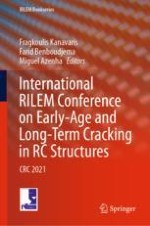This volume gathers the latest advances, innovations and applications in the field of crack control in concrete, as presented by leading international researchers and engineers at the International RILEM Conference on Early-age and Long-term Cracking in RC Structures (CRC 2021), held in Paris, France on April 9, 2021. It covers early-age and long-term imposed deformations in concrete, analytical formulations for calculating crack widths in concrete, numerical simulations of early-age and long-term restrained behaviour of concrete elements, experimental investigations on cracking, on-site monitoring of imposed deformations and cracking, crack control and repair, and sustainability of design and remediation. The conference demonstrated that a comprehensive approach to this problem requires the design of robust experimental techniques, the development of multiscale models and the evaluation of code-based and other analytical approaches relevant to crack control in concrete. The contributions, which were selected through a rigorous international peer-review process, share exciting ideas that will spur novel research directions and foster new multidisciplinary collaborations.
